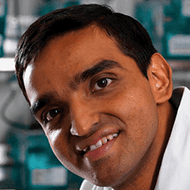Written by Nascent Transcript writer Sumantra Chatterjee
November 2017

A few days ago, I found myself sitting next to a news reporter at a scientific meeting, who lamented that all the beautiful work done by scientists is never explained properly to the public and that the gap between science and the general society is increasing. That set me to thinking–are scientists becoming too insular? What should we do to re-engage the public?
One recent event that highlighted this was a slew of scientific articles describing our ability to “edit” early human embryos. Most of these studies were proof of principle that it is technically possible to one day make prenatal genetic changes to prevent certain diseases.
But since our scientific papers are full of jargon and are not really popular reading material, the general public got the impression that we were in the era of designer babies because of mainstream press headlines such as, “When Baby Genes Are for Sale, the Rich Will Pay”. And although scientists held nuanced debates in many scientific forums, most of these were not properly conveyed to the public and the long-term benefits and applications of such techniques were not highlighted. Sadly, even the ethics debate was not properly conducted, leaving behind a trail of unanswered questions and a false image of crazy scientists creating a Frankenstein.
Two initiatives in 20th century America perfectly highlight the potential benefits of engaging the public in the scientific journey. The first was the formation of The National Foundation for Infantile Paralysis by President Franklin D. Roosevelt. This was popularized by Eddie Cantor’s radio appeal to the public to send dimes to support polio research, thus renaming the organization The March of Dimes Birth Defects Foundation. This popular appeal galvanized the general public by making them partners in the research progress.
The second was the joint effort by Sidney Farber and Mary Lasker to raise public awareness about cancer. They highlighted the need for a more concerted effort to find a cure by doing better research, which eventually led to the National Cancer Act of 1971. The positive effects of this are felt even today by cancer researchers as well as patients and their families. This monumental effort made the general public aware of the various nuances of cancer research and the difficulties associated with them, thus making science a little less of a mystery and scientists a bit more human.
Scientists will benefit in the long run from this inclusiveness. As we engage the public and make them aware of our work, it will lead to a change of public perception and render popular support for the practice of science. This in turn will prompt policy–and decision-makers to allocate more resources for science, which will allow for better research, justifying the investment.
The practice of science has always fascinated and terrified the layman in equal measures. To them, it’s often a world full of jargon and complicated data that have no real-life application. It takes a while to explain that if you look beyond the jargon, most things we do eventually impact people’s daily lives. And this is where we, as a scientific community, have to improve and learn to deconstruct our science, and communicate to the public the real crux of what we do. This will have far-reaching consequences in how people view science and support various scientific endeavors. We scientists are an integral part of the larger society we live in, and the science we do should benefit society in some form. It’s high time we take this message to a larger audience, listen to them, and learn to truly respect and debate alternative points of view.
